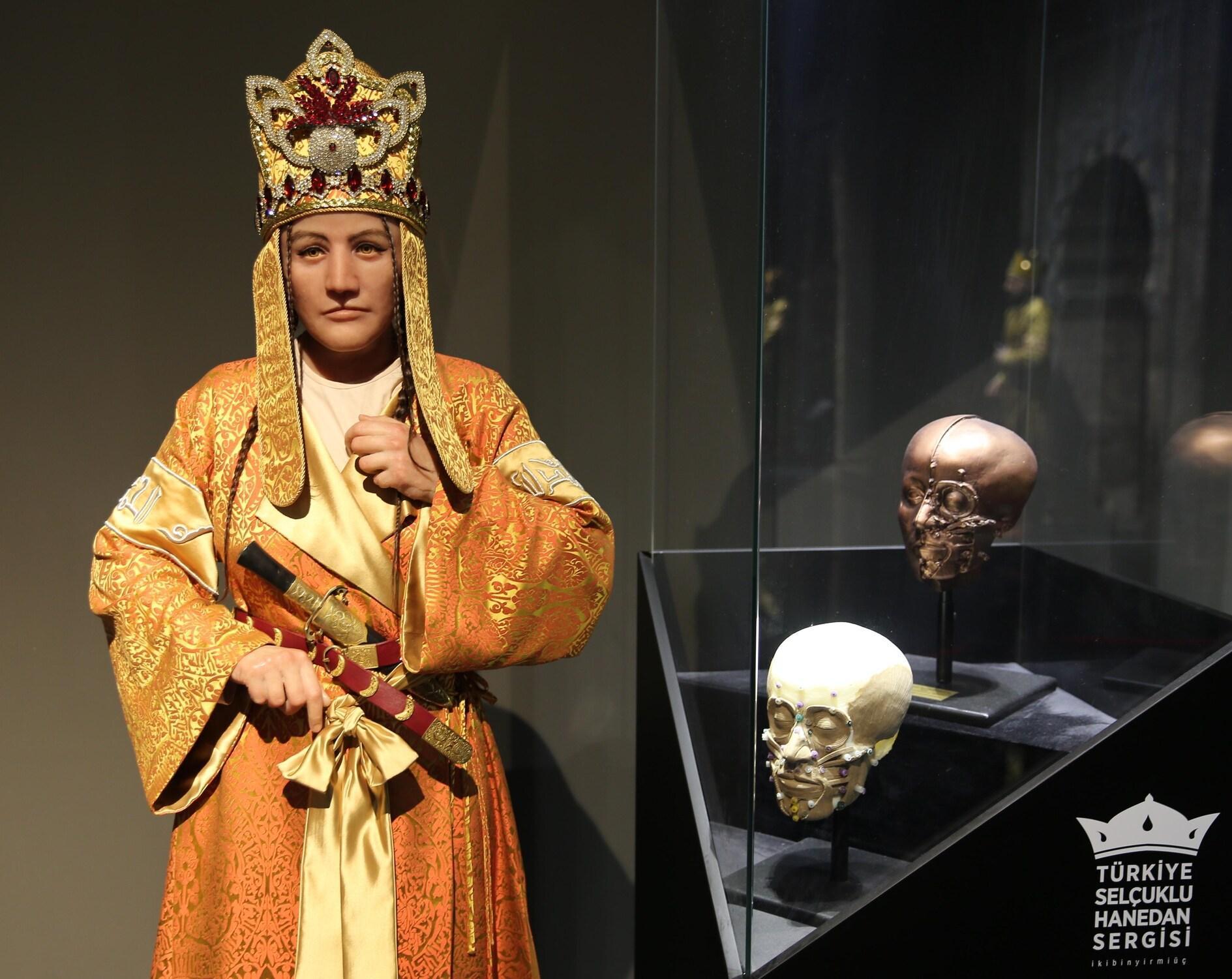
Detailed information about the profiles of several sultans has been obtained through DNA and anatomical analyses conducted on the remains extracted from the dynasty’s mausoleum of the Anatolian Seljuk State.
Professor Mutluhan Taş, a faculty member at Gazi University's Faculty of Education, Department of Fine Arts, completed realistic silicone sculptures of the faces and bodies of these figures with his team over six years, as part of the "Project for the Organization of the Remains in the Konya Dynasty Mausoleum of the Turkish Seljuks." Throughout this process, historical and genetic information about the dynasty members was gathered.
Seventeen silicone sculptures of dynasty members, including 12 sultans, have been on display for about two years at the Dar-ül Mülk Exhibition Palace operated by Konya Metropolitan Municipality.
Speaking to the state-run Anadolu Agency, Taş said they carried out the project in collaboration with osteoarcheologist Emel Akpolat, emphasizing that it makes a significant contribution to Turkish history.
He explained that the project began in 2017, aiming to preserve the bodily integrity of the Anatolian Seljuk sultans.
In subsequent stages, the project focused on assembling, classifying and restoring the disarticulated bones of the sultans.
As part of the silicone sculpture work, the facial reconstructions of the sultans whose bodily integrity was reestablished were also completed.
Taş noted that the project was long-term and undertaken by experts in their fields, stating, "DNA samples taken from the Seljuk sultans were sent to the Istanbul Forensic Medicine Institute. There, the sultans' lineages and phenotypes [genetic and physical characteristics] were determined. Following the identification of father-son and grandfather-grandson relationships, racial ties, and associated tissue thicknesses and lengths, the facial reconstructions were completed."
Diseases and causes of death also identified
Taş stated that they uncovered many details about the diseases and causes of death of the Anatolian Seljuk sultans. "According to the records of Ibn Bibi, recognized as the primary chronicler of Anatolian Seljuk history, and descriptions by Byzantine historians, it was believed that Kilij Arslan II was of very short stature. However, we found that he was actually 1.83 meters tall and that, due to changes in his skeletal structure with age, his stooping posture created the illusion of shortness. As for Kaykhusraw I, Byzantine sources claim he was beheaded by a Byzantine knight, but our research suggests he was actually martyred after being attacked from behind during battle," he said.
"We also discovered that Kaykhusraw II, who lost the Battle of Köse Dağ, suffered from numerous genetic disorders, including rheumatoid arthritis [a chronic autoimmune disease affecting joints], which caused significant deformities in his skull," he added.
Taş concluded by expressing pride that these works offer invaluable contributions to the Turkish nation, Turkish history and the legacy of the Anatolian Seljuk sultans.